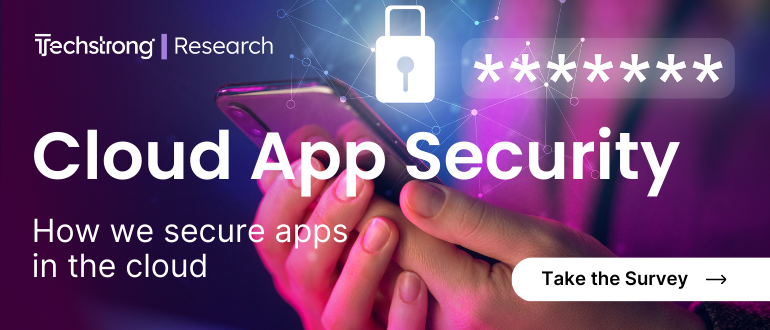
2024-6-20 19:5:27 Author: securityboulevard.com(查看原文) 阅读量:18 收藏
It’s not easy being a young person these days. School, friendships, social media — they’re all piling on pressure, and they all seem to intertwine. After a while, sometimes it helps just to take a break.
This, in a nutshell, is what mental health days for students are all about. Not familiar with the concept? Read on for everything you need to know about mental health days and how you can promote emotional wellness across your school district.
What are student mental health days?
According to the Child Mind Institute, a mental health day is time off from school to rest and recharge. A health day isn’t an excuse to avoid classwork or problems at school, but a chance to reduce stress, decompress, and protect one’s emotional well-being. And, unlike a regular sick day, students don’t have to be physically ill to take one.
Letting kids skip class when they’re not sick might seem counterintuitive. To some, it may seem like a stepping stone to chronic absenteeism. Yet, according to a 2021 survey, 70% of schools support giving students mental health days.
Why? Because, with mental illness rising throughout the United States, educators are at the forefront of an ongoing crisis. Mental health absences are just one of many strategies districts can take to curb stress, anxiety, and other mental health concerns.
Are student mental health days legal?
The answer is yes and no. Laws vary by state, but as of 2024, 12 states have enacted legislation permitting kids at public schools to take days off for mental health reasons:
- Arizona
- California
- Colorado
- Connecticut
- Illinois
- Kentucky
- Maine
- Nevada
- Oregon
- Utah
- Virginia
- Washington
Notably, some states limit the number of mental health absences a student can take during the school year — like Illinois, which caps it at five. In some states, such as Nevada, health days are only an excused absence if kids provide a handwritten note from a mental health professional.
Should your school district allow time off for mental health reasons? Ultimately, depending on your location, you might not have a choice. Regardless, keep parents and guardians in mind when deciding on your absence policy. According to a Verywell Mind survey of 1,000 parents:
- 75% said mental health days “can be an effective tool to support a child’s mental health.”
- 74% said they want schools to offer mental health days.
- 69% said it’s normal to take a day off for mental wellness.
Understanding the K-12 mental health crisis
Approaching the topic of youth mental health isn’t simple. But it’s easier when you put it into context — so, let’s take a closer look at the problem.
Simply put, the United States is experiencing a mental health crisis. Although it impacts all ages, America’s youth have especially felt the effects of mental distress, stress, and anxiety.
In recent years, mental health concerns among teens, especially girls and LGBTQ+ students, have escalated. For instance, between 2019 and 2021, the percentage of high school teens experiencing persistent feelings of hopelessness and sadness rose from 37% to 42%. Specifically, 57% of female students and 69% of LGBTQ+ students reported persistent sadness or hopelessness during this period.
Sadly, it’s often difficult for a young person with a mental health condition to receive appropriate treatment — either because of stigma or a lack of accessible resources. In fact, almost 60% of American youth with major depression didn’t receive any treatment in 2023. The prevalence of untreated youth with depression varied widely, with the lowest rates in the District of Columbia (32.6%) and the highest in South Carolina (77.1%).
Failing to address mental health needs can have severe consequences, including:
- Poor academic performance: High school students with significant symptoms of depression are more than twice as likely to drop out compared to their peers. Additionally, students aged 6-17 with mental, emotional, or behavioral concerns are three times more likely to repeat a grade.
- Self-harm: Mental Health America says self-harm, or intentional self-injury, is most commonly the result of sadness, distress, anxiety, or confusion. According to estimates, between one-third and half of U.S. adolescents have engaged in this behavior to cope with negative emotions.
- Suicidal ideation: According to Education Week, citing data from the Center for Disease Control and Prevention (CDC), suicidal thoughts, attempts, and actual suicides among young people have also increased in recent years, with Black kids twice as likely as their white peers to die by suicide.
What’s causing the youth mental health crisis?
Many researchers argue that COVID-19 significantly worsened the nationwide mental health issue. One study reports that depression and anxiety among young people doubled during the pandemic.
Although both the CDC and Mental Health America corroborate these claims, the truth is that mental health concerns have been rising for some time. For instance, from 2009 to 2019, the number of high school students reporting persistent feelings of hopelessness increased by 40%; the share seriously considering attempting suicide increased by 36%; and the share creating a suicide plan increased by 44%.
It’s impossible to blame these numbers on any one particular cause. But, several factors certainly contribute to the problem:
- Toxicity: Bullying, cyberbullying, and harassment cause feelings of isolation, rejection, and low self-esteem, which can lead to a serious mental health condition.
- Violence: Cases of school violence, including shootings, can make kids feel unsafe on campus. This can take a toll on student mental health and may lead to chronic absenteeism, among other negative outcomes.
- Home life: Adverse childhood experiences and toxic family relationships can also negatively impact mental wellness and the development of mental illness.
- Social media: Platforms like Facebook, Instagram, and TikTok are not in and of themselves necessarily bad for student mental health. However, excessive usage or obsession with social media can negatively impact emotional and physical health.
The importance of mental health days for students
The K-12 mental health issue is much bigger than it’s ever been. Although there’s no end-all solution for emotional distress, mental health days are a big step in the right direction.
But do they work? According to Verywell Mind, they do: 77% of parents who gave their kids time off from school say it positively impacted their mental health. Indeed, giving students an excused absence for mental health reasons can help in numerous ways:
- Reduces stress and anxiety: Students are under enormous academic, social, and emotional pressure, especially in high school. Health days give them much-needed downtime to clear their minds, relax, and approach these challenges with renewed energy.
- Allows time for self-care: Self-reflection means taking stock of your feelings and overall mental well-being. It’s hard to do during a busy school year, but an occasional absence allows students to press pause, unwind, and confront their anxiety.
- Decreases burnout: Burnout is one of the most common drivers of chronic absenteeism. Health days give kids a break from their daily grind, which can help reduce fatigue and ease negative emotions.
- Improves academic performance: Stress affects the brain’s prefrontal cortex, which is responsible for critical thinking, memory, and cognitive skills. When stress levels spike, academic performance typically declines. Encouraging students to take mental health days will help their brains function better in the classroom.
- Promotes healthy habits: Mental health days are more than one-time relief. They set a precedent and teach kids how to handle emotions. By cultivating healthier habits early, students can rely on these skills throughout adulthood.
Critically, permitting student mental health days can positively impact your entire school district. Why? Because it reduces stigma. Health days are an acknowledgment that everyone deals with stress and that it’s okay to take breaks. Plus, they make it easier for children to discuss these tough subjects, whether it be with friends, family, a school counselor, or a mental health professional.
The power of student safety monitoring
Giving students mental health days is one thing, but encouraging them to take one is another. It helps to know which kids could use a break — however, knowing isn’t easy.
That’s where student safety monitoring can work wonders. In short, a monitoring solution is a tool that alerts you, or a designated person, of incidents that might indicate an at-risk student. For example, Cloud Monitor continuously scans Google Workspace and Microsoft 365 for signs of self-harm, suicidal thoughts, toxicity, violence, and more.
Why these domains? Because although 90% of schools use these cloud applications, few have visibility into how kids communicate across them. And, you might be surprised to learn that students often discuss mental health, home life, social problems, and other issues in apps like Google Docs, Google Chat, and Microsoft Word.
Browser protections, like Content Filter, can also provide a necessary first line of defense. As a web filtering tool, it primarily blocks inappropriate websites, like social media or gaming. However, it also alerts you when students search for terms related to suicide, self-injury, and more.
Together, these solutions increase visibility over your K-12 digital environment. In turn, you can identify at-risk students and connect them to the appropriate mental health resources.
Support mental health with ManagedMethods
At ManagedMethods, we’re dedicated to helping school districts fight the mental health crisis and protect student safety. With Cloud Monitor and Content Filter, you can do that and more.
Want to see firsthand how they’ll support your district? Request a free cyber safety and security audit today.
The post A K-12 guide to mental health days for students appeared first on ManagedMethods.
*** This is a Security Bloggers Network syndicated blog from ManagedMethods authored by Alexa Sander. Read the original post at: https://managedmethods.com/blog/student-mental-health-days/
如有侵权请联系:admin#unsafe.sh


![[FREE] Google Workspace and/or Microsoft 365 Security Audit. Learn More & Claim >>](https://no-cache.hubspot.com/cta/default/6834707/25278544-250d-4265-b25f-0c160bf67707.png)
